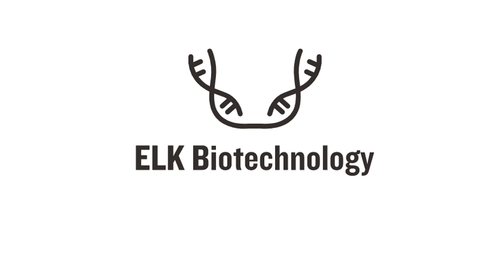Product Description
Mouse [Pyruvate dehydrogenase [lipoamide]] kinase isozyme 2, mitochondrial (PDK2) ELISA Kit | AE60154MO | Abebio
Species Reactivity: Mouse (Mus musculus)
Abbreviation: PDK2
Alternative Name: PDHK2; pyruvate dehydrogenase kinase 2|pyruvate dehydrogenase kinase; isoenzyme 2|pyruvate dehydrogenase; lipoamide; kinase isozyme 2; mitochondrial
Application: ELISA
Range: 0.156-10 ng/mL
Sensitivity: 0.055 ng/mL
Intra-Assay: ≤4.6%
Inter-Assay: ≤8.6%
Recovery: 0, 88
Sample Type: Serum, Plasma, Other biological fluids
Detection Method: Sandwich
Analysis Method : Quantitive
Test Principale: This assay employs a two-site sandwich ELISA to quantitate PDK2 in samples. An antibody specific for PDK2 has been pre-coated onto a microplate. Standards and samples are pipetted into the wells and anyPDK2 present is bound by the immobilized antibody. After removing any unbound substances, a biotin-conjugated antibody specific for PDK2 is added to the wells. After washing, Streptavidin conjugated Horseradish Peroxidase (HRP) is added to the wells. Following a wash to remove any unbound avidin-enzyme reagent, a substrate solution is added to the wells and color develops in proportion to the amount of PDK2 bound in the initial step. The color development is stopped and the intensity of the color is measured.
Product Overview: [Pyruvate dehydrogenase [lipoamide]] kinase isozyme 2, mitochondrial is an enzyme encoded by the PDK2 gene. It codes for an isozyme of pyruvate dehydrogenase kinase. To find human PDKs, Gudi et al. (1995) used oligonucleotide primers to screen a human liver cDNA library by PCR. The human PDK2 gene encodes a protein with a predicted molecular mass of 46, 181 Da that shares 96% identity with that of the rat PDK2 gene. Northern blot analysis showed that the PDK2 message was found in many tissues, with the highest level in heart and skeletal muscle, intermediate levels in brain, kidney, pancreas and liver, and low levels in placenta and lung.
Stability: The stability of ELISA kit is determined by the loss rate of activity. The loss rate of this kit is less than 5% within the expiration date under appropriate storage condition. The loss rate was determined by accelerated thermal degradation test. Keep the kit at 37°C for 4 and 7 days, and compare O.D.values of the kit kept at 37°C with that of at recommended temperature. (referring from China Biological Products Standard, which was calculated by the Arrhenius equation. For ELISA kit, 4 days storage at 37°C can be considered as 6 months at 2 - 8°C, which means 7 days at 37°C equaling 12 months at 2 - 8°C) .
 Euro
Euro
 USD
USD
 British Pound
British Pound
 NULL
NULL

![Mouse [Pyruvate dehydrogenase [lipoamide]] kinase isozyme 2, mitochondrial (PDK2) ELISA Kit Mouse [Pyruvate dehydrogenase [lipoamide]] kinase isozyme 2, mitochondrial (PDK2) ELISA Kit](https://cdn11.bigcommerce.com/s-452hpg8iuh/images/stencil/1280x1280/products/850142/1141729/abebio__10018.1658410391__15287.1658422245.png?c=2)
![Mouse [Pyruvate dehydrogenase [lipoamide]] kinase isozyme 2, mitochondrial (PDK2) ELISA Kit Mouse [Pyruvate dehydrogenase [lipoamide]] kinase isozyme 2, mitochondrial (PDK2) ELISA Kit](https://cdn11.bigcommerce.com/s-452hpg8iuh/images/stencil/100x100/products/850142/1141729/abebio__10018.1658410391__15287.1658422245.png?c=2)
![Mouse [Pyruvate dehydrogenase [lipoamide]] kinase isozyme 2, mitochondrial (PDK2) ELISA Kit Mouse [Pyruvate dehydrogenase [lipoamide]] kinase isozyme 2, mitochondrial (PDK2) ELISA Kit](https://cdn11.bigcommerce.com/s-452hpg8iuh/images/stencil/500x659/products/850142/1141729/abebio__10018.1658410391__15287.1658422245.png?c=2)
![Mouse [Pyruvate dehydrogenase [lipoamide]] kinase isozyme 2, mitochondrial (PDK2) ELISA Kit Mouse [Pyruvate dehydrogenase [lipoamide]] kinase isozyme 2, mitochondrial (PDK2) ELISA Kit](https://cdn11.bigcommerce.com/s-452hpg8iuh/images/stencil/500x659/products/858944/1151011/abbkine__86392.1644437967__55707.1644438366__52420.1658850814.jpg?c=2)
![Mouse [Pyruvate dehydrogenase [lipoamide]] kinase isozyme 2, mitochondrial (PDK2) ELISA Kit Mouse [Pyruvate dehydrogenase [lipoamide]] kinase isozyme 2, mitochondrial (PDK2) ELISA Kit](https://cdn11.bigcommerce.com/s-452hpg8iuh/images/stencil/500x659/products/374666/534820/sab-signalway-antibody__92073.1641690747__91737.1641697878__93467.1641864662__88276.1642545351__85396.1642555017.gif?c=2)


![Human [Pyruvate dehydrogenase [lipoamide]] kinase isozyme 1, mitochondrial ELISA Kit Human [Pyruvate dehydrogenase [lipoamide]] kinase isozyme 1, mitochondrial ELISA Kit](https://cdn11.bigcommerce.com/s-452hpg8iuh/images/stencil/500x659/products/383522/543674/sab-signalway-antibody__92073.1641690747__91737.1641697878__93467.1641864662__88276.1642545351__45810.1642557476.gif?c=2)